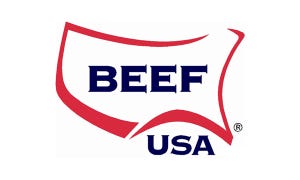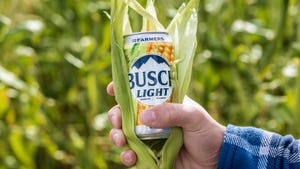Apply a little math to your cattle business
Knowing your true cost of gain paired with the value of gain are steps to bringing profitable trades.
October 15, 2021

Most of what we were taught about the cattle business is wrong, especially when it comes to marketing. These thoughts that were given to us at a time when we were young became our paradigms. I have written a lot on here lately about paradigms and how they control us without us even realizing it. This is why few people recognize the answer to cattle marketing when they see it. That answer is math.
I have written on here multiple times that you must know how to calculate a Return on the Gain if you are going to be able to consistently generate positive cash flow in the cattle business. The key component to being able to make the simple algebraic equation work is knowing your true Cost of Gain and using real prices.
Every year we give young people degrees and send them out into the world, yet we fail to teach them how to calculate a ROG. Think about that for a moment. We are entrusting the future of food production to people who do not know how to make money. Making a profit is part of being sustainable.
To accomplish this profit must be added in as an expense. When we do this and execute a good sell/buy trade we are generating positive cash flow. Positive cash flow is the fuel that powers a business. Some business experts consider it to be the most important business statistic. Yet we do not look at it that way in the cattle business.
Are you living a lie?
In the cattle business it has become an accepted lie that losing money is just part of it from time to time. If its ok to lose $1, it will soon be OK to lose $10 and eventually it will be OK to lose $100. This is a slippery slope and is a culture of failure. Back to the paradigm thing again to define culture. Culture is a group paradigm, or group thinking. This culture of failure is so mainstream that even our most popular beef advocate bloggers have written about how noble we are to run our operation in the red to produce safe wholesome nutritious beef for the world.
It’s my opinion that culture stems from the industry’s fixation on break evens. We can go broke breaking even. The method of marketing most people try to do is buy something low, feed it for awhile, and then sell it for more than they got in it. If they can accomplish this, they make some money. After the last 18 months I am probably more shocked than anyone this paradigm is still around.
Now when we use real numbers, and we can do the math and understand it will show us relationships. This insight is what I call market literacy. Not many people have this, even though it is simple to learn, and that is why having it is your number one advantage to making money in this industry.
Not long ago I got to listen to one of those specialists give a speech. It was a pretty good speech until he got to the line where he said he’d take the trade any day of selling fat cattle at $124 if the COG was a dollar. Just because your sell price is higher than your COG doesn’t mean its profitable. This guy admitted in front of everyone with that statement, that he doesn’t understand how to calculate Value of Gain nor does he understand price relationships. His message is the one that’s reaching your kids
Twice this year I have noticed a margin tracker on a different website has failed to use current and real prices when projecting profit/loss of feeding cattle. Both times they were showing feeding cattle had a strong positive margin. Here’s what happened, the market had gone up but the market report they were using for feeders was from a stockyard that hadn’t held a sale in three weeks. If they were using current feeder steer prices the margin tracker would’ve looked much different. The date posted on the top right hand corner is there for a reason.
Asking the right questions
I received a call from a friend this week who wanted to discuss the potential of some trades. He was really excited from a call he had earlier where they were discussing some monster trades. I dampened his spirits a bit when I questioned the reality of the numbers.
First was the sell animal. To have a steer that weight coming off grass they had to have bought the most over-valued steers last spring. If the sell animal came out of a backgrounding yard with the COG they were using it would’ve had to be gaining between 3.5- and 4-pounds a day.
The next thing I questioned was the replacement animal. It was 25 under the market. How cattle look on paper should reflect how they really look. What was wrong with the replacement and how would it affect the resale price?
Here’s my point in all this. We can manipulate numbers to give us the outcome we want. We can make projections and possible trades look awesome. Sometimes sale prices look really high or low, and we must question why. We must be honest with ourselves when calculating our costs. We must charge full market value, and we must account for everything including our labor.
The bid price for cattle and feed is the perfect distillation of all the market information there is. It tells us exactly what something is worth and we can then use that price to do some algebra. The algebra is only gonna tell us the truth if we use current real numbers that are pure and not manipulated or guessed at. When we stay disciplined and keep it real we can then put together a long string of profitable trades and have a vibrant healthy business.
View from the markets
This week markets were mixed. This is causing a shift in VOG in the Plains markets. Flyweight cattle gave up the most VOG this week. Cattle weighing 5 to 800 had the best VOG this week, and anything heavier than that experienced a hard drop in VOG. The market is signaling it’s more than willing to pay to put some weight on these cattle right now but only up to a point.
In the south it was a different story. Flyweights had the best VOG and as the cattle get heavier the more of a crap shoot it is since the VOG varied so much weight to weight and sale to sale. This volatility is exactly why we must know our real numbers in order navigate through it and continue to move towards our target of making some money.
This week feeder bulls were 25 back, and replacement quality heifers caught a premium of 7-10 dollars. Unweaned cattle had a battle of the sexes this week. Unweaned steers were 10 back but heifers were anywhere from 5-15 back. Some of the heavy feeder heifers continue to be the buy back against fats.
About the Author(s)
You May Also Like




.png?width=300&auto=webp&quality=80&disable=upscale)
